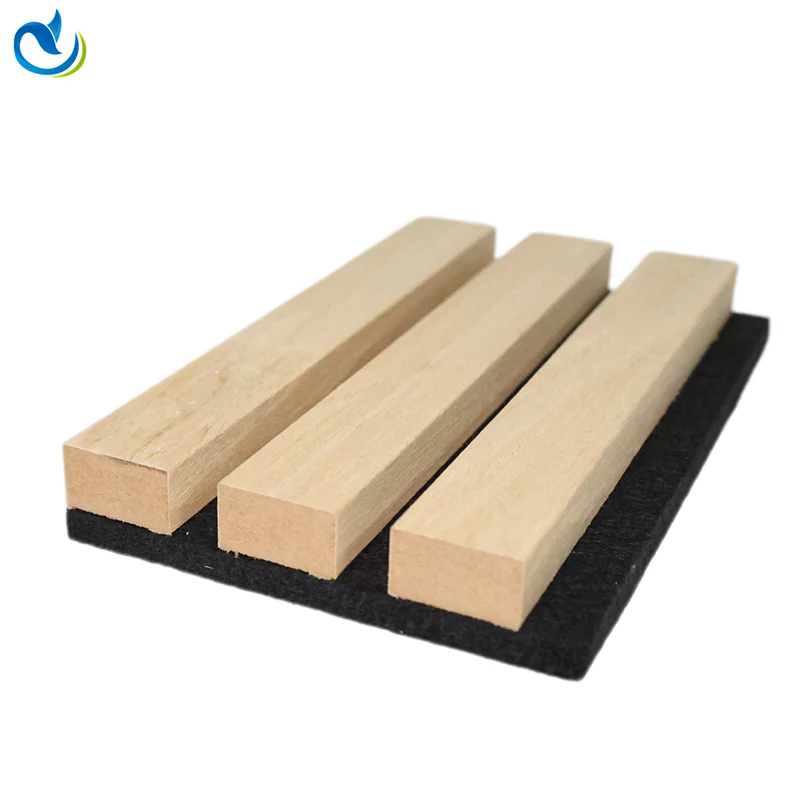How Do Acoustic Wall Panels Improve Sound Quality in Homes and Offices?
2025-11-27
Acoustic wall panels are specialized solutions designed to control sound reflection, absorption, and reverberation within interior spaces. These panels are widely used in offices, studios, restaurants, and residential environments to create optimal acoustic conditions.
What Are Acoustic Wall Panels and Their Key Features?
Acoustic wall panels are designed to reduce noise pollution, prevent echo, and enhance the clarity of speech and sound within a room. They are usually made from sound-absorbing materials like polyester fiber, foam, mineral wool, or fabric-wrapped composites. Modern panels are not only functional but also aesthetically versatile, offering customizable shapes, colors, and textures to match interior designs.
Key Product Parameters of Acoustic Wall Panels:
| Parameter | Description |
|---|---|
| Material | Polyester fiber, foam, mineral wool, fabric-wrapped composites |
| Thickness | 25mm – 100mm |
| NRC (Noise Reduction Coefficient) | 0.5 – 1.0 (indicates sound absorption efficiency) |
| Dimensions | Customizable; common sizes: 600x600mm, 1200x600mm |
| Fire Rating | Class A/B (depending on material) |
| Weight | 2 – 6 kg per panel, varies by size and material |
| Installation | Wall-mounted, adhesive, or modular systems |
| Color Options | Customizable to client specifications |
| Surface Finish | Fabric-wrapped, perforated, printed, or smooth |
| Applications | Offices, conference rooms, studios, theaters, restaurants, residential |
These parameters highlight the versatility and efficiency of acoustic wall panels, allowing users to tailor solutions according to the acoustic requirements and interior aesthetics of a space.
Why Are Acoustic Wall Panels Crucial for Sound Management?
Understanding the significance of acoustic wall panels requires a closer look at the problems they solve:
-
Noise Control: Acoustic panels absorb excess sound, reducing ambient noise and creating a quieter, more productive environment.
-
Speech Clarity: In offices and educational spaces, panels prevent echo and sound reflection, enhancing speech intelligibility.
-
Audio Performance: Studios and theaters rely on panels to maintain high-quality audio experiences by minimizing sound distortion.
-
Aesthetic Integration: Modern panels can be designed to blend seamlessly into interiors, offering both visual appeal and functional benefits.
By addressing these challenges, acoustic wall panels serve as a strategic investment for any space where sound quality is critical.
How Do Acoustic Wall Panels Work and How to Choose the Right One?
Acoustic wall panels function by absorbing sound waves, preventing them from bouncing off hard surfaces, and reducing reverberation within the room. Their effectiveness depends on several factors: material, thickness, placement, and installation method.
Mechanism of Sound Absorption:
-
Porous Materials: Fibrous or foam materials trap sound waves in their structure, converting acoustic energy into heat.
-
Surface Design: Fabric-wrapped or perforated surfaces improve absorption efficiency and can target specific frequency ranges.
-
Panel Placement: Strategic placement on walls, ceilings, and corners maximizes absorption and minimizes echo.
Selection Guidelines:
-
Determine Acoustic Requirements: Identify whether the goal is noise reduction, speech clarity, or audio enhancement.
-
Check NRC Rating: A higher Noise Reduction Coefficient indicates better sound absorption.
-
Choose Material and Finish: Select materials compatible with fire safety regulations and interior aesthetics.
-
Consider Panel Size and Layout: Large spaces may require full-wall installations or modular panels for optimal results.
Common Questions About Acoustic Wall Panels
Q1: How long do acoustic wall panels last?
A1: The lifespan of acoustic wall panels depends on the material and maintenance. High-quality panels made from polyester fiber or mineral wool can last 10–15 years with proper care. Regular cleaning, avoiding moisture exposure, and ensuring stable installation extend the panels’ durability.
Q2: Can acoustic panels be customized for interior design?
A2: Yes, acoustic panels can be fully customized in terms of color, texture, size, and shape. Modern solutions allow printed designs or fabric-wrapped surfaces that integrate seamlessly with interiors while maintaining sound absorption efficiency.
Future Trends and Advantages of Acoustic Wall Panels
Acoustic wall panels are evolving with advances in materials and design innovation. The following trends are shaping the future of sound management in interior spaces:
-
Sustainable Materials: Eco-friendly, recycled fibers are being increasingly used to create panels with minimal environmental impact.
-
Integration with Smart Systems: Some panels now include sound-sensing and adaptive absorption technologies for intelligent acoustic control.
-
Aesthetic Innovation: Panels are becoming design elements, including 3D shapes, printed graphics, and modular configurations to enhance visual appeal.
-
Multi-functional Panels: New panels combine acoustic performance with insulation, fireproofing, and antimicrobial properties for comprehensive indoor solutions.
Advantages of Using Acoustic Wall Panels:
-
Enhanced comfort and productivity in workplaces.
-
Improved audio quality in theaters, studios, and conference rooms.
-
Reduced noise complaints in residential and commercial buildings.
-
Versatile design options that complement interior decor.
Acoustic wall panels are an indispensable element in modern interior design, offering practical benefits and aesthetic appeal. With carefully selected materials, thicknesses, and finishes, these panels provide effective sound absorption, noise reduction, and improved audio clarity in various environments. Companies seeking high-performance solutions for acoustic control can rely on Arris for a wide range of premium acoustic wall panels tailored to both functional and aesthetic requirements.
For more information about our products, technical support, or customization options, contact us today to explore how Arris acoustic wall panels can enhance the acoustic quality of your space.



